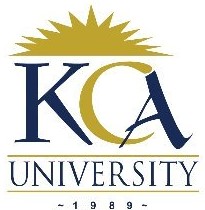
UNIVERSITY EXAMINATIONS: 2017/2018
EXAMINATION FOR THE DIPLOMA IN INFORMATION
TECHNOLOGY/DIPLOMA IN BUSINESS INFORMATION TECHNOLOGY
DIT203 & DBIT205 SYSTEMS ANALYSIS AND DESIGN
FULLTIME/PARTTIME
DATE: AUGUST 2018 TIME: 1
1
/2 HOURS
INSTRUCTIONS: ATTEMPT QUESTION ONE AND ANY OTHER TWO QUESTIONS.
QUESTION ONE
a) Distinguish between systems analysis and system design. [4 Marks]
b) Describe the characteristics and differences between the following information systems.
[6 Marks]
i. MIS and Office automation
ii. MIS and DSS
iii. DSS and EIS
c) Explain characteristics that a good system analyst should possess. [5 Marks]
d) During the analysis stage of system development fact gathering is important. Discuss three fact
finding techniques citing strengths and weaknesses of each method. [9 Marks]
e) Explain SIX characteristics of good design. [6 Marks]
QUESTION TWO
a) Using relevant examples distinguish between OPEN and CLOSED systems. [4 Marks]
b) The day to day activities of any given organization need to be captured, processed and stored by
the organizations information systems. Using relevant examples explain the information system
that does this and the management level this is done. [5 Marks]
c) System documentation is one of the important stages of system development. Explain why high
quality system documentation is paramount. [6 Marks]
d) Describe the features of an information systems. [5 Marks]
QUESTION THREE
a) You are the finance function representative on a project team charged with carrying out a cost
benefit analysis on a proposed on-line order entry system. It is envisaged that the system will
involve field sales staff using portable computers and communication links to enter data into a
central computer system. What factors would you expect to take into account when considering
the cost of developing, implementing and operating the system? [6 Marks]
b) A major distributor of office supplies has a set of criteria for preparing the bills it gives to both
retail and wholesale customers.
When the customer places the order, one of the sales staff prepares the order and writes the bill. If there
is an insufficient quantity of items on hand, a back-order is set up for the missing items. The available
items are shipped and a bill is prepared and sent for those items. The customer is billed for the backordered items when they are shipped.
Quantity purchases over a specified limit are sold at discounted prices. However, the discount applies
only to wholesale customers. Retail customers do not receive the discount, even if they purchase more
than the minimum quantity level.
All retail customers pay sales taxes on their orders. Wholesale customers do not pay taxes, provided they
have a state tax exemption form on file (otherwise, they also must pay sales taxes on their orders).
All bills are mailed to the customers unless they pay for the order when they receive their merchandise.
Required
Develop a complete decision table, showing all conditions and actions, together with appropriate
decision rules. [9 Marks]
c) Outline FIVE factors you can use to determine the success of an information system. [5 Marks]
QUESTION FOUR
(a) Give three reasons why tools such as data flow diagrams, entity relationship diagrams and
flowcharts are particularly suited for documenting design options of an information system compared to
narrative texts. [6 Marks]
(b) A certain programmer once said that “once we write the program and get it to work, our job is
done”. Comment on this statement giving four reasons that consistently disapprove this statement.
[6 Marks]
(c) Describe the objectives for the following stages of the systems development life cycle:
(i) Feasibility study
(ii) Systems analysis
(iii) Systems design
(iv) Systems evaluation
[8 Marks]
QUESTION FIVE
a) Describe five principal causes of information systems failure. [5 Marks]
b) Define the following terms as used in entity modeling. [5 Marks]
i. Entity
ii. Relationship
iii. Attribute
iv. Foreign key
v. Primary key
c) Outline software selection criteria that an analyst might consider when evaluating commercial
software. [5 Marks]
d) A publishing company produces scientific books on various subjects. The books are written by
authors who specialize in one particular subject. The company employs editors who, not
necessarily being specialists in a particular area, each take sole responsibility for editing one or
more publications. A publication covers essentially one of the specialist subjects and is normally
written by a single author. When writing a particular book, each author works with on editor, but
may submit another work for publication to be supervised by other editors. To improve their
competitiveness, the company tries to employ a variety of authors, more than one author being a
specialist in a particular subject.
e)
Required:
Draw a DFD [5 Marks]
